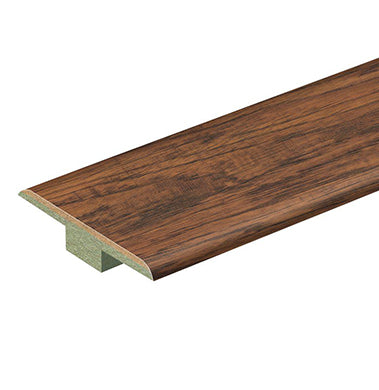LVP/ LVT Install Instructions
Installation Instructions
Click Lock Floating Floor Installation Instructions For LVP or LVT
PLEASE READ ALL INSTRUCTIONS CAREFULLY BEFORE INSTALLATION. IMPROPER INSTALLATION WILL VOID WARRANTY.
• Flooring should be one of the last items installed in any new construction or remodel project.
• Inspect all materials carefully for color, finish, sheen and defects before installation. Ensure adequate lighting for proper inspection. The warranty does not cover materials with visible defects once they are installed. If there any doubts to the quality, dimensions or appearance of the vinyl flooring DO NOT INSTALL. Please contact Clic Vinyl as INSTALLATION OF THE PRODUCT IS ACCEPTANCE OF THE PRODUCT.
• While vinyl flooring is water resistant (or waterproof in some cases), it is not a moisture barrier. It is good practice to test the installation surface for moisture and action accordingly. A moisture barrier is always recommended.
• Store flooring boxes flat and fully supported during shipping and storage.
• Condition the vinyl flooring by storing the vinyl flooring in the room or rooms where installation will occur for 24-48 hours before installation at normal living temperature of 65–80°F and relative humidity of 40-55%. This product is not suitable for installation in areas above or below temperatures or relative humidity listed, or non-climate-controlled areas such as covered decks, porches or outdoors.
• Avoid direct sunlight exposure to minimize thermal degradation, color fading, and potential adverse effects on vinyl flooring.
• Installations in facilities where walkers and wheelchairs are used (residential and/or extended care) or in facilities with movement of heavy displays, racks, dentist chairs, etc. may exert extreme stress and compromise the surface and locking system resulting in gapping, product separation, bowing, heaving, and expansion in one direction.
• It is the responsibility of the installer/owner to determine if the jobsite subfloor and jobsite conditions are environmentally and structurally acceptable for vinyl floor installation. The manufacturer declines any responsibility for vinyl flooring failure resulting from or related to subfloor, subsurface, jobsite damage or deficiencies after vinyl flooring has been installed.
• Crawl spaces must be a minimum of 18” (46cm) from the ground to the underside of floor joists. A ground cover of minimum 6 mil black polyethylene film is essential as a vapor barrier with joints lapped 6” (15 cm) and sealed with moisture resistant tape. The crawl space should have a perimeter venting equal to a minimum of 1.5% of the crawl space square footage. These vents should be properly located to foster cross ventilation. Where necessary, local regulations prevail.
• All installed areas must have a working heater & air conditioner to provide normal living conditions for minimum of one week prior to installation and for duration of the flooring use. Normal living conditions include: normal living temperature of 65–80°F and relative humidity of 40-55%. This product is not suitable for installation in areas above or below temperatures or relative humidity listed, or non-climate-controlled areas such as covered decks, porches or outdoors.
• Do not use underlay products unless recommended by the product manufacturer. Please contact Clic Vinyl for questions about underlay and vinyl flooring installation.
Subfloors
• Vinyl flooring can be installed over concrete, wood subfloors and most existing hard-surface floor coverings.
• All subfloors must be dry, clean (swept and vacuumed of any debris), structurally sound and flat within 3/16” (4.7mm) per 10-foot radius. Use floor leveling compound if necessary to achieve the desired flatness. If the subfloor is not flat within 3/16” (4.7mm) per 10-foot radius gapping may occur.
• Wood subfloors must be a minimum of 18” (46cm) from the ground to the underside of floor joists. A ground cover of minimum 6 mil black polyethylene film is essential as a vapor barrier with joints lapped 6” (15 cm) and sealed with moisture resistant tape. The crawl space should have a perimeter venting equal to a minimum of 1.5% of the crawl space square footage. These vents should be properly located to foster cross ventilation. Where necessary, local regulations prevail.
• Check if well secured; nail or screw every 6” along joists to avoid squeaking. If not flat, sand down high spots and fill low spots with a cement-based leveling compound.
• Concrete subfloors must be fully cured for a minimum of 60 days prior to vinyl flooring installation and must be tested for moisture. Concrete moisture vapor emissions should not exceed 8lbs (ASTM F1869) or 90%RH (ASTM F2170) with a pH limit of 9. For installations outside of this range a minimum 6 mil polyfilm required between concrete and ground. Subfloor moisture prevention limits the potential growth of harmful bacteria and mold. If not level, grind down high spots and fill low spots with a Portland cement-based leveling compound.
• To install over an existing hard-surface flooring (ceramic tile, resilient tile, etc.) check to see it is well bonded to the subfloor and flat. Apply cement based leveling compound to flatten surface. Heavily cushioned vinyl flooring or vinyl flooring consisting of multiple layers is not a suitable subfloor for installation. Do not sand existing flooring as it may contain asbestos. Take proper precautions and contact an asbestos abatement company to remove old flooring.
• If vinyl flooring has underpad attached, additional underlay is not required, or recommended.
• Do not use underlay products unless recommended by the product manufacturer. Please contact Clic Vinyl for questions about underlay and vinyl flooring installation.
Installation Requirements
1. First, decide which direction to install the vinyl flooring. Measure the width of the room and divide by the width of vinyl plank/ tile to determine how many rows of flooring will be required. In most installations the last row will need to be cut to fit. For best visual effects, a width smaller than 2.5 inches is not recommend. You may need to split the difference between the first and last row to balance the look of your installation. Always work from several open boxes of flooring and “dry lay” the vinyl flooring before permanently installing the vinyl flooring. This will allow you to select varying grains & colors and to arrange them in a harmonious pattern. It is the installers’ responsibility to determine the expectations of what the finished floor will look like with the end user expectations. Large spans more than 39’ require expansion breaks or transition moldings.
2. Begin installation next to an outside wall. This is usually the straightest and best reference for establishing a straight working line. Establish this line by measuring an equal distance from the wall at both ends and snapping a chalk line, this will be your reference line. The distance you measure from the wall should be the width of the plank/tile or the width calculated as above. You may need to scribe cut the first row of planks/tiles on the wall side ensuring the first row is exactly on the reference line (chalk line).
3. Using spacers, leave a 3/8” expansion gap between wall and edges of the flooring.
4. Installing first row: from left to right with the groove towards the installer, place the first plank/tile. It is critical you install the first row straight and square, proper placement of the first row is key to the installation. Note if the first row does not need to be scribed in width, remove the tongue so a solid edge is along wall. Align and angle the second board, end joint tongue into end joint groove of first plank/tile. To ensure tight fit, tap joint with rubber mallet in a downward angle motion towards adjoining plank/tile. Continue installing additional planks/tiles in this manner until reaching final plank/tile in the first row. Measure and cut final plank/tile to length.
5. Installing second row and beyond: you may use left-over plank/tile from first row if greater than 8” in length. If not, cut a new plank/tile at least 8” in length and allowing 8” between end joints from the previous row. Position first plank/tile in place by angling and interlocking the side tongue (long end) into first row. Check for snug fit and fold down gently into place. Position second plank/tile using same angling, interlocking motion on side tongue (long end) fold down gently and leave 1mm gap on adjoining board. Tap the joint with rubber mallet in a downward angle motion towards adjoining board until tongue and groove lock. Continue installing additional planks/tiles in each row in this manner. When you reach final plank/tile in each row, measure and cut final plank/tile to length. CONTINUALLY CHECK FOR GAPPING AFTER EVERY PLANK/TILE BEFORE MOVING ON TO THE NEXT PLANK/TILE OR ROW. CHECK EVERY 4TH ROW WITH A STRING LINE ENSURING IT REMAINS STRAIGHT.
6. Installing final row: the final row and all corresponding boards may need to be cut lengthwise and widthwise for proper fit.
7. Finishing the installation: replace molding or wall base, allowing slight clearance between the molding and the planks/tiles. Nail the molding to the wall surface not through the flooring. At doorways and at other areas where the vinyl flooring may meet other flooring surfaces, it is preferable to use a “T-molding”, or similar to cover exposed edge. Check for clearance, do not pinch planks/tiles.
Expansion Gaps & Transition Requirements
• Maintain a 3/8” expansion gap around room perimeter.
• Areas over 39’ long or 39’ wide need transition pieces.
• Non-square rooms must have expansion or transition gaps separating them.
• All door openings must have an expansion gap between rooms.
Radiant Heat
• Concrete subfloor with in-floor (embedded) radiant heating systems are allowed. The heating system must be 1 ½” below the surface layer of the concrete slab. Before installation of vinyl flooring, in-floor heating systems must be operated at normal living temperature for 14 days. 24 hours before, during, and 24 hours after installation, turn off in-floor heating unit. Radiant Heat systems must have failsafe capability to ensure surface temperatures do not exceed 80ºF.
• Use of under-floor electric heating mats or other under-floor heating units directly under vinyl flooring can void the warranty. Please contact Clic Vinyl for questions about vinyl flooring and under-floor electric heating mats or other under-floor heating mats.
Post Installation Maintenance
• Use rosin paper and cover installed vinyl flooring area to prevent damage from other trade works. Do not use plastic film or other non-breathing material.
• Clean up spills immediately.
• Routinely vacuum, sweep and/or dust vinyl flooring. Do not use treated dust mops.
• For heavier cleaning use a damp mop and clean water or neutral pH-based cleaner. Do not use harsh cleaners nor chemicals on vinyl flooring. Oil and petroleum-based products can result in surface staining. Do not use abrasive scrubbing tools or vacuums with beater bar. Do not use electric brooms.
• To protect vinyl flooring surface, close blinds and/or drapes during peak sunlight hours. Excessive heat and light will subject vinyl flooring to thermal degradation and potential fading effects. AVOID DIRECT SUNLIGHT EXPOSURE. Place mats at all entrances to keep dirt and debris off vinyl flooring. Use non-staining, breathable mats. Rubber mats may discolor vinyl flooring. Use floor protectors for furniture. Non-staining felt pads can be used provided they are changed on a regular basis to prevent dirt, debris and sand buildup. Wide, non-staining casters at least 2” in diameter or floor protectors should be used on rolling furniture such as office chairs. To prevent point loads on heavy furniture, use large non-staining surface floor protectors. Do not use ball type castors as they can damage floors.
• When moving heavy furniture or appliances, place a sheet of Masonite or plywood under the piece being moved to distribute the weight and reduce denting or scratching. For light pieces use a clean blanket or a piece of carpet face down under the piece to be moved. Be aware of any sharp edges as they can scratch and gouge your floor’s surface.







